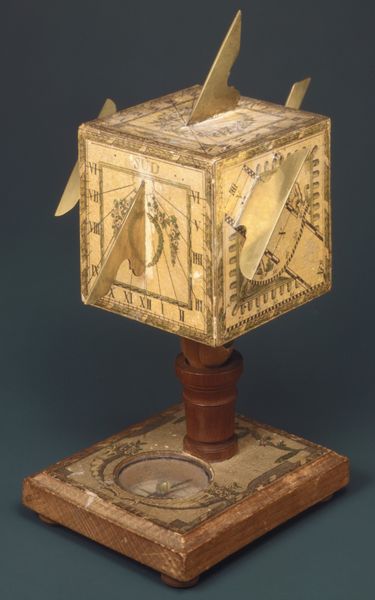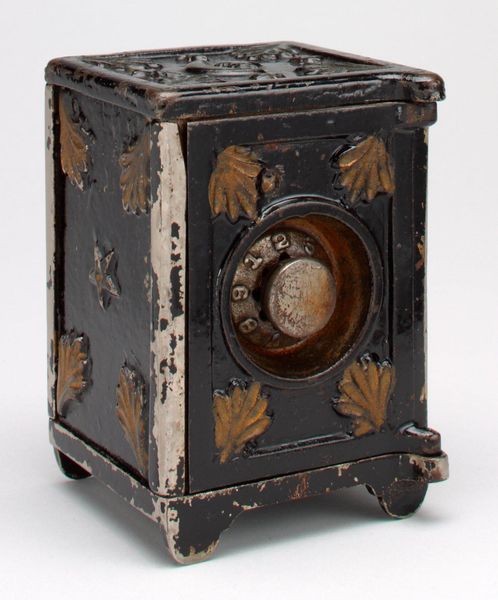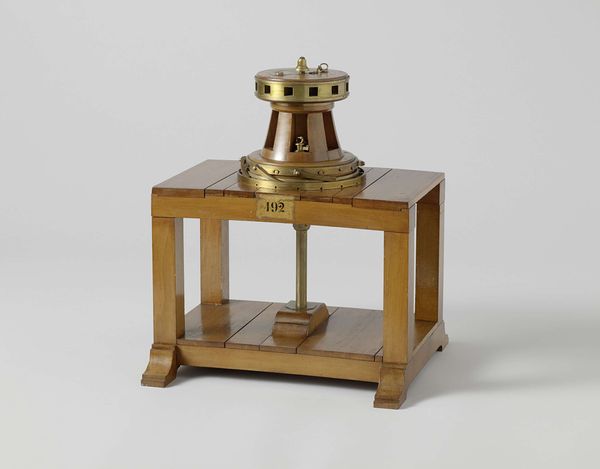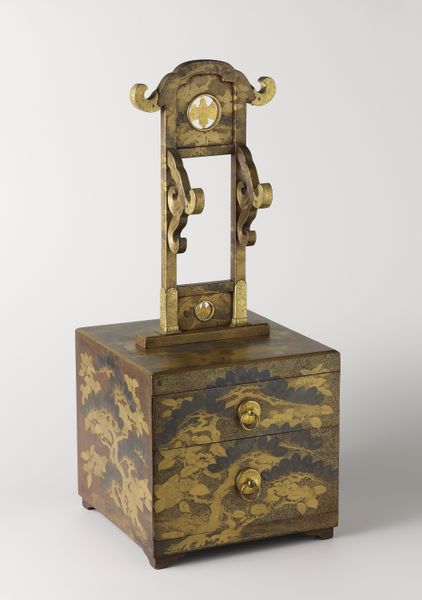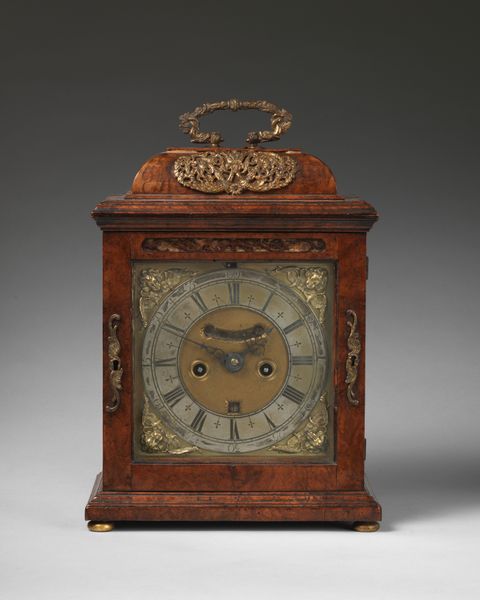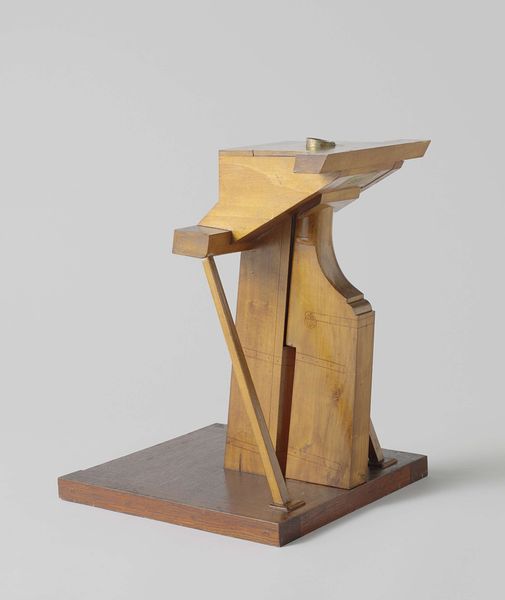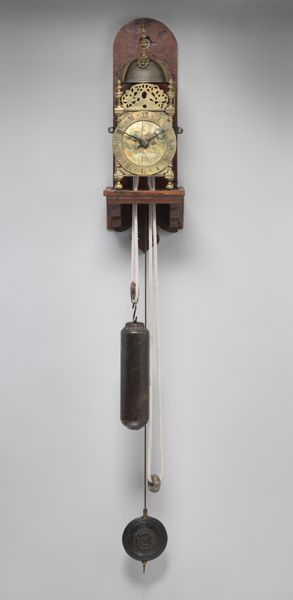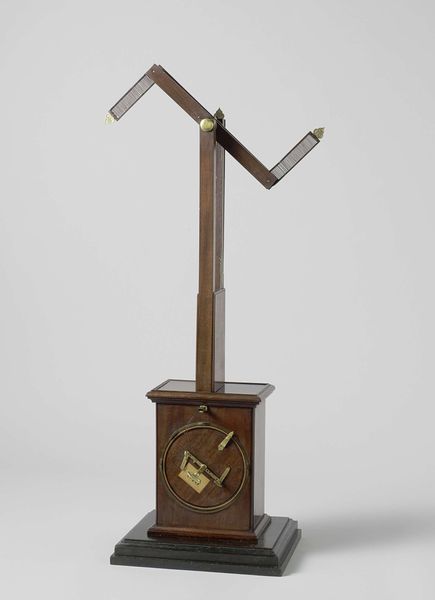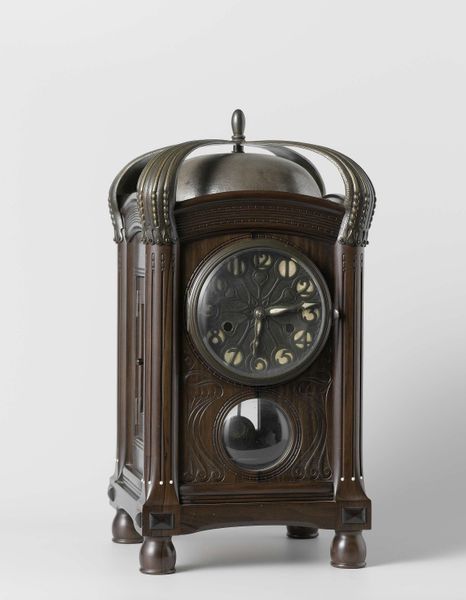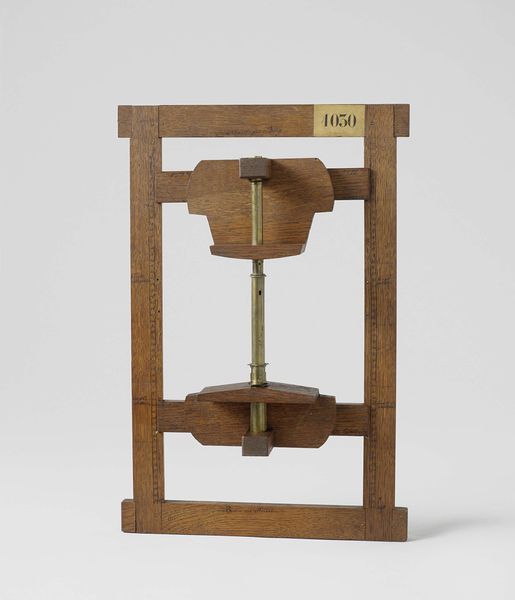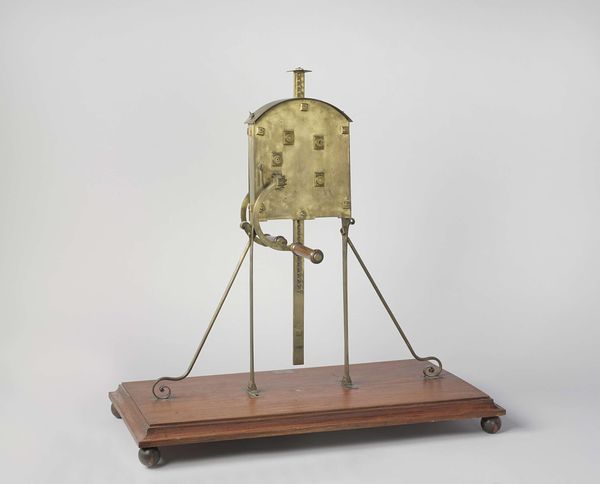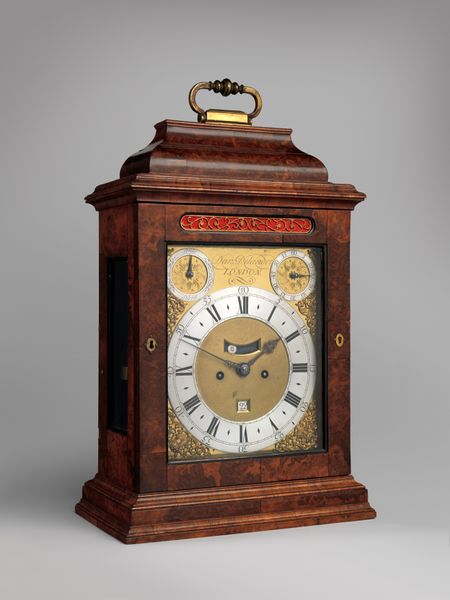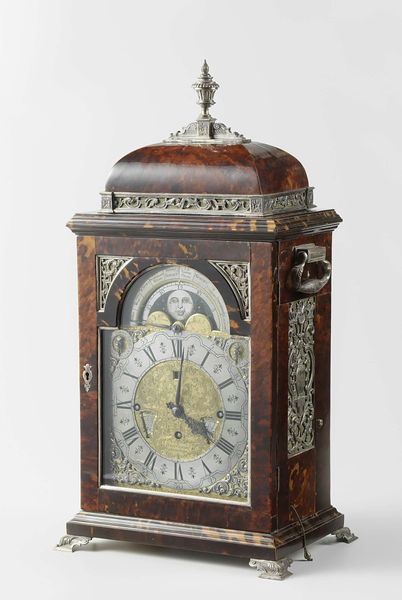
metal
#
art-nouveau
#
metal
#
geometric
#
ceramic
#
decorative-art
Dimensions: height 32.5 cm, width 21.8 cm, depth 15.0 cm, depth 19.7 cm
Copyright: Rijks Museum: Open Domain
Curator: Let’s take a look at this metal clock entitled "Pendule van messing," created around 1905 by Firma Onder den Sint-Maarten. Editor: Well, my initial reaction is its solidity. The form itself is rigidly geometric. A cubic body sits atop rectilinear supports on a square base. Visually, the object declares itself as a construction first, and as a clock second. Curator: Indeed. The Arts and Crafts movement highly valued function. Its utilitarian design is in lockstep with other aesthetic projects of the period. But let’s consider how this pendulum clock deviates from some norms. Editor: Deviations such as? Curator: Consider the lack of gilding or floral enameling that defined some clock making, instead, it seems this artist opts for the patinated quality of worked metal, adding depth and dimension. Editor: That surface is intriguing, and contrasts strongly with the rigid forms you noticed. There is, nonetheless, geometric repetition on the clock’s face. This motif connects visually to the pendulum disk suspended below, anchoring both aesthetically. Curator: How interesting that this factory would invest in what we might now consider 'design objects'. I wonder how they understood its relation to older works they likely encountered day-to-day. Did they see it as a departure from the historicized references of other workshops? Or something that added diversity to the line? Editor: What intrigues me is the object's muted coloration, juxtaposed to Art Nouveau style details; The use of patinated metal and unadorned cubic volumes feels modern, perhaps looking ahead even to the styles that followed Art Nouveau’s initial popularity. Curator: I'm left with the sense of how much this maker responded to ongoing questions about hand craft, the place of metal working, and domestic environments. Editor: Absolutely. By turning my attention to details like the blued metal of the dial’s background, I get a better idea of the work's place between tradition and more experimental visual territories.
Comments
No comments
Be the first to comment and join the conversation on the ultimate creative platform.
